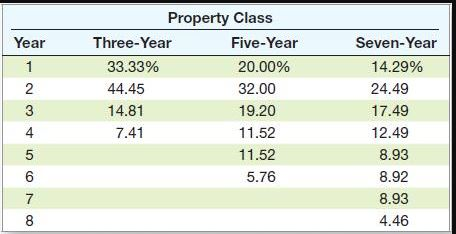Question
J. Smythe, Inc., manufactures fine furniture. The company is deciding whether to introduce a new mahogany dining room table set. The set will sell for
| J. Smythe, Inc., manufactures fine furniture. The company is deciding whether to introduce a new mahogany dining room table set. The set will sell for $8,100, including a set of eight chairs. The company feels that sales will be 2,550, 2,700, 3,250, 3,100, and 2,850 sets per year for the next five years, respectively. Variable costs will amount to 48 percent of sales, and fixed costs are $2.01 million per year. The new tables will require inventory amounting to 9 percent of sales, produced and stockpiled in the year prior to sales. It is believed that the addition of the new table will cause a loss of 700 tables per year of the oak tables the company produces. These tables sell for $5,400 and have variable costs of 43 percent of sales. The inventory for this oak table is also 9 percent of sales. The sales of the oak table will continue indefinitely. J. Smythe currently has excess production capacity. If the company buys the necessary equipment today, it will cost $16 million. However, the excess production capacity means the company can produce the new table without buying the new equipment. The company controller has said that the current excess capacity will end in two years with current production. This means that if the company uses the current excess capacity for the new table, it will be forced to spend the $16 million in two years to accommodate the increased sales of its current products. In five years, the new equipment will have a market value of $3.9 million if purchased today, and $6.5 million if purchased in two years. The equipment is depreciated on a seven-year MACRS schedule. The company has a tax rate of 38 percent, and the required return for the project is 12 percent. MACRS schedule |
Calculate the NPV of the new project. |
Step by Step Solution
There are 3 Steps involved in it
Step: 1

Get Instant Access to Expert-Tailored Solutions
See step-by-step solutions with expert insights and AI powered tools for academic success
Step: 2

Step: 3

Ace Your Homework with AI
Get the answers you need in no time with our AI-driven, step-by-step assistance
Get Started


